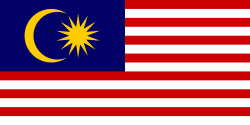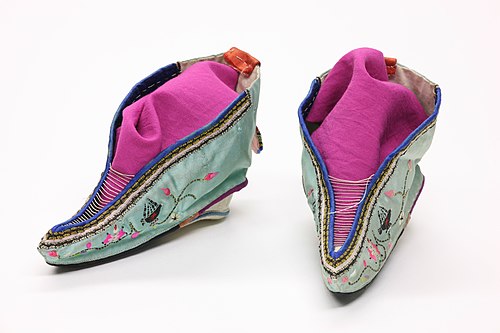Portal:Asia

 Asia (/ˈeɪʒə/ ⓘ AY-zhə, UK also /ˈeɪʃə/ AY-shə) is the largest continent in the world by both land area and population. It covers an area of more than 44 million square kilometres, about 30% of Earth's total land area and 8% of Earth's total surface area. The continent, which has long been home to the majority of the human population, was the site of many of the first civilisations. Its 4.7 billion people constitute roughly 60% of the world's population. Asia is part of the landmass of Eurasia with Europe, and of Afro-Eurasia with both Europe and Africa. In general terms, it is bounded on the east by the Pacific Ocean, on the south by the Indian Ocean, and on the north by the Arctic Ocean. As continents are no natural formation its borders, particularly the land border of Asia with Europe is a historical and cultural construct, as there is no clear physical and geographical separation between them. A commonly accepted division places Asia to the east of the Suez Canal separating it from Africa; and to the east of the Turkish straits, the Ural Mountains and Ural River, and to the south of the Caucasus Mountains and the Caspian and Black seas, separating it from Europe. Since the concept of Asia derives from the term for the eastern region from a European perspective, Asia is the remaining vast area of Eurasia minus Europe. Therefore, Asia is a region where various independent cultures coexist rather than sharing a single culture, and its boundary with Europe is somewhat arbitrary and has moved since its first conception in classical antiquity. The division of Eurasia into two continents reflects East–West cultural differences, some of which vary on a spectrum. (Full article...) Featured article The Anbar campaign consisted of fighting between the United States military, together with Iraqi security forces, and Sunni insurgents in the western Iraqi governorate of Al Anbar. The Iraq War lasted from 2003 to 2011, but the majority of the fighting and counterinsurgency campaign in Anbar took place between April 2004 and September 2007. Although the fighting initially featured heavy urban warfare primarily between insurgents and U.S. Marines, insurgents in later years focused on ambushing the American and Iraqi security forces with improvised explosive devices (IEDs), large scale attacks on combat outposts, and car bombings. Almost 9,000 Iraqis and 1,335 Americans were killed in the campaign, many in the Euphrates River Valley and the Sunni Triangle around the cities of Fallujah and Ramadi. Al Anbar, the only Sunni-dominated province in Iraq, saw little fighting in the initial invasion. Following the fall of Baghdad it was occupied by the U.S. Army's 82nd Airborne Division. Violence began on 28 April 2003 when 17 Iraqis were killed in Fallujah by U.S. soldiers during an anti-American demonstration. In early 2004 the U.S. Army relinquished command of the governorate to the Marines. By April 2004 the governorate was in full-scale revolt. Savage fighting occurred in both Fallujah and Ramadi by the end of 2004, including the Second Battle of Fallujah. Violence escalated throughout 2005 and 2006 as the two sides struggled to secure the Western Euphrates River Valley. During this time, Al Qaeda in Iraq (AQI) became the governorate's main Sunni insurgent group and turned the provincial capital of Ramadi into its stronghold. The Marine Corps issued an intelligence report in late 2006 declaring that the governorate would be lost without a significant additional commitment of troops. (Full article...) Selected Country Malaysia is a country in Southeast Asia. A federal constitutional monarchy, it consists of 13 states and three federal territories, separated by the South China Sea into two regions: Peninsular Malaysia on the Indochinese Peninsula and East Malaysia on the island of Borneo. Peninsular Malaysia shares land and maritime borders with Thailand, as well as maritime borders with Singapore, Vietnam, and Indonesia; East Malaysia shares land borders with Brunei and Indonesia, and a maritime border with the Philippines and Vietnam. Kuala Lumpur is the country's national capital, largest city, and the seat of the legislative branch of the federal government, while Putrajaya is the federal administrative capital, representing the seat of both the executive branch (the Cabinet, federal ministries, and federal agencies) and the judicial branch of the federal government. With a population of over 34 million, it is the world's 42nd-most populous country. The country has its origins in the Malay kingdoms, which, from the 18th century on, became subject to the British Empire, along with the British Straits Settlements protectorate. During World War II, British Malaya, along with other nearby British and American colonies, was occupied by the Empire of Japan. Following three years of occupation, Peninsular Malaysia was briefly unified as the Malayan Union in 1946 until 1948 when it was restructured as the Federation of Malaya. The country achieved independence on 31 August 1957. On 16 September 1963, independent Malaya united with the then British crown colonies of North Borneo, Sarawak, and Singapore to become Malaysia. In August 1965, Singapore was expelled from the federation and became a separate, independent country. (Full article...) Featured biography Al-Mukhtar ibn Abi Ubayd al-Thaqafi (Arabic: الْمُخْتَار ٱبْن أَبِي عُبَيْد الثَّقَفِيّ, romanized: al-Mukhtār ibn Abī ʿUbayd al-Thaqafī; c. 622 – 3 April 687) was a pro-Alid revolutionary based in Kufa, who led a rebellion against the Umayyad Caliphate in 685 and ruled over most of Iraq for eighteen months during the Second Fitna. Born in Ta'if, Mukhtar moved to Iraq at a young age and grew up in Kufa. Following the death of Husayn ibn Ali, a grandson of the Islamic prophet Muhammad, at the hands of the Umayyad army in the Battle of Karbala in 680, he allied with the rival caliph Abd Allah ibn al-Zubayr in Mecca, but the alliance was short-lived. Mukhtar returned to Kufa where he declared Muhammad ibn al-Hanafiyya, a son of caliph Ali (r. 656–661) and brother of Husayn, the mahdi and the imam, and called for the establishment of an Alid caliphate and retaliation for Husayn's killing. He took over Kufa in October 685, after expelling its Zubayrid governor, and later ordered the execution of those involved in the killing of Husayn. Hostile relations with Ibn al-Zubayr ultimately led to Mukhtar's death by the forces of the Zubayrid governor of Basra, Mus'ab ibn al-Zubayr, following a four-month siege. (Full article...) General imagesThe following are images from various Asia-related articles on Wikipedia. Featured picture Credit: User:Dschwen Foot binding was the custom of binding the feet of young girls painfully tight to prevent further growth. The practice probably originated among court dancers in the early Song dynasty, but spread to upper class families and eventually became common among all classes. The tiny narrow feet were considered beautiful and to make a woman's movements more feminine and dainty.
Did you know...
Updated: 23:05, 5 August 2025 In the news
Related portalsMajor Religions in Asia Middle East (West Asia) Central Asia and Caucasus Indian Subcontinent Southeast Asia East Asia Selected panorama
This image by the firm of Maison Bonfils depicts the city of Beirut, Lebanon, sometime in the last third of the 19th century. Maison Bonfils was the extraordinarily prolific venture of the French photographer Félix Bonfils (1831–85), his wife Marie-Lydie Cabanis Bonfils (1837–1918), and their son, Adrien Bonfils (1861–1928). The Bonfils moved to Beirut in 1867 and, over the next five decades, their firm produced one of the world's most important bodies of photographic work about the Middle East. Maison Bonfils was known for landscape photographs, panoramas, biblical scenes, and posed “ethnographic” portraits. TopicsCategoriesAssociated WikimediaThe following Wikimedia Foundation sister projects provide more on this subject:
More portalsShortcuts to this page: Asia portal • P:ASIA |



















































































